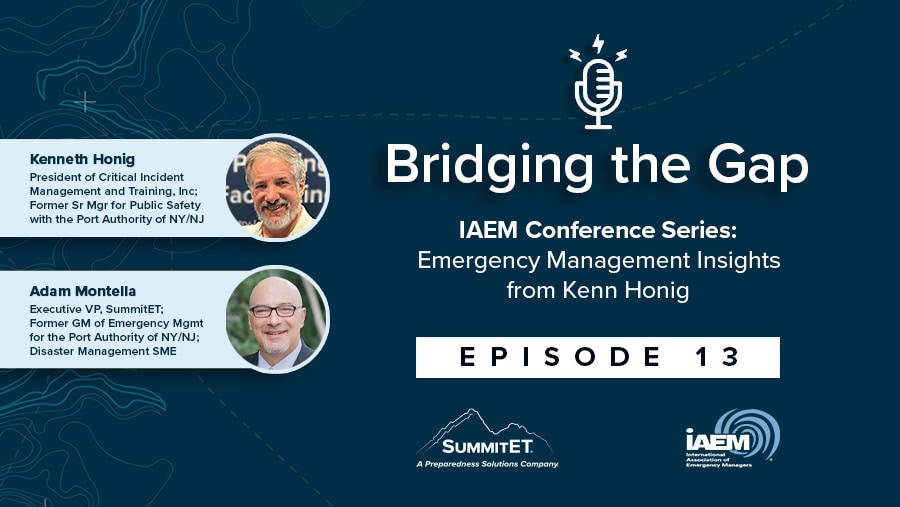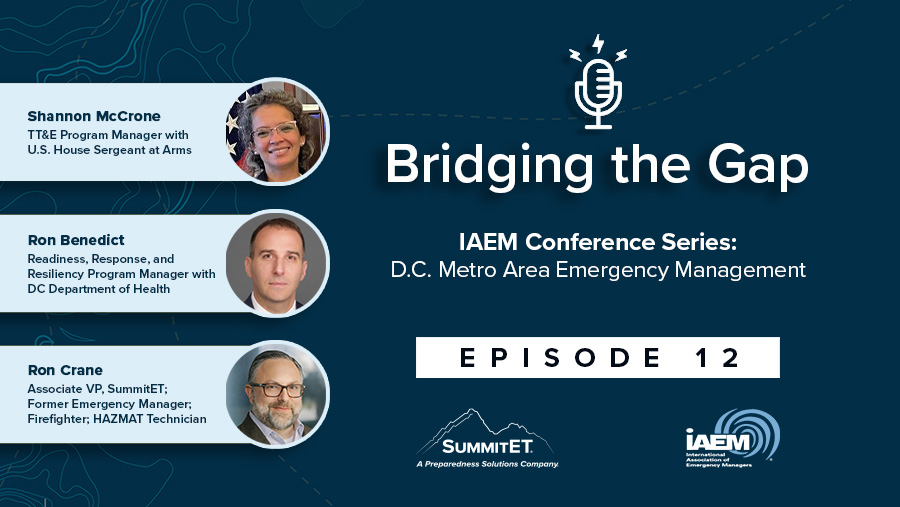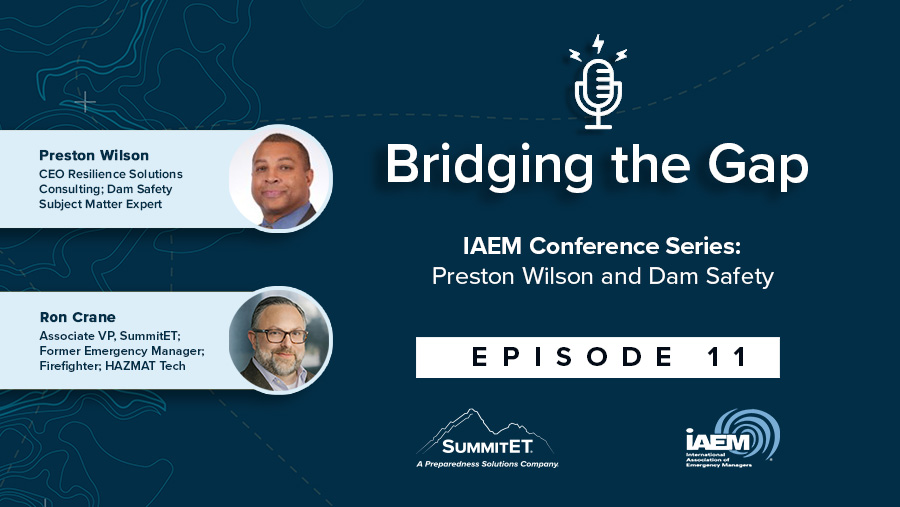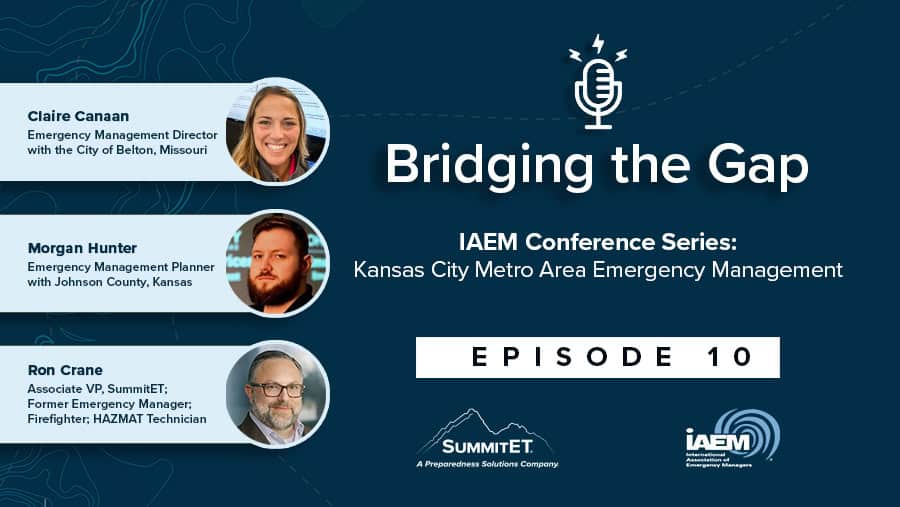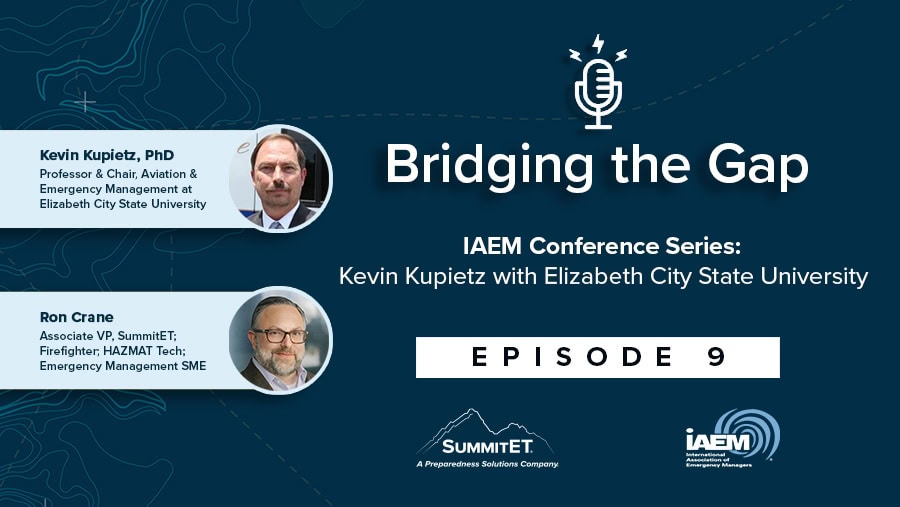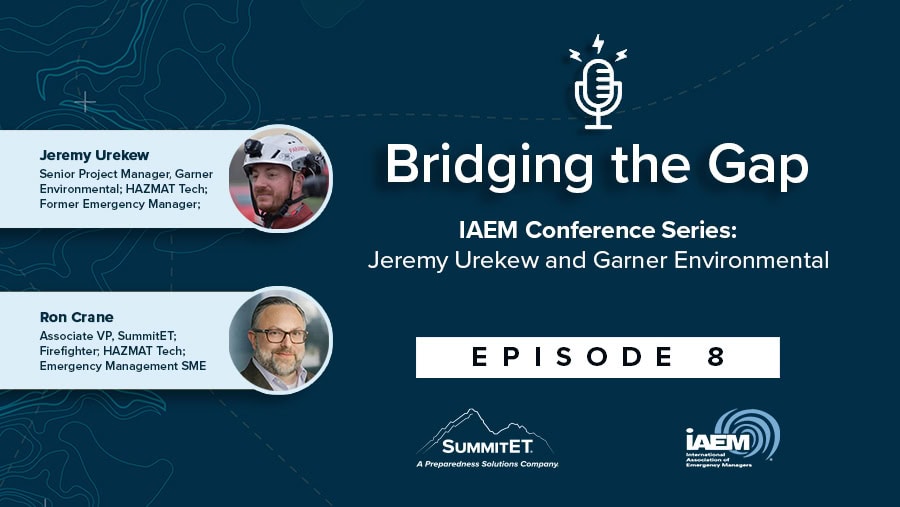Adam Montella and Ron Crane of SummitET learn about the DHS-led Community Lifeline Status System project from emergency manager Hal Grieb of G&H International Services.

In this IAEM Conference Series episode of SummitET’s podcast Bridging the Gap, Hal Grieb of G&H International Services introduces the Community Lifeline Status System (CLSS), a software reporting tool that operationalizes the Federal Emergency Management Agency’s Community Lifelines construct. CLSS is an effort led by the Department of Homeland Security (DHS) Science and Technology Directorate (S&T), in collaboration with FEMA, to provide the emergency management community with a comprehensive, systematic approach to lifeline status planning, monitoring, and reporting across areas impacted by disaster. The reporting tool, which has been in development for about 2.5 years, is set to be released at no cost to all state, local tribes, and territories in April 2025.
Purpose of CLSS
This new tool aims to make lifelines more than just a conceptual idea by creating a repeatable framework for data-driven decisions, allowing emergency managers to easily assess and report on the status of critical community lifelines during a disaster. This approach enhances communication among executives and elected officials and allows for a deeper understanding of community indicators to prioritize and share resources effectively.
“CLSS is going to open the door to linking your plans that you’ve already written… to the data that you’re overwhelmed with.“
Over 220 agencies and 500 emergency managers have provided input to ensure that the tool is built for emergency managers by emergency managers.
Introduction of Community Lifelines
Community Lifelines were introduced by FEMA in early 2019 to prioritize scarce resources for critical community services and increase effectiveness in disaster operations. Lifelines categorize essential services such as energy, communications, food/hydration/shelter, health and medical, safety and security, and more, and are designed to help local and state governments manage these services more efficiently.
Flexibility of the Tool
The Community Lifeline Status System Tool can be used for both response and recovery planning and allows for the consolidation of critical services under grouped categories, making it easier for smaller government staffs to manage multiple responsibilities.
The tool allows for customization of indicators by jurisdiction, as different communities have unique indicators of impact. This customization ensures that the tool is relevant and effective for various communities with different resources and capabilities.
Challenges in Emergency Management
In the episode, Hal shares that from his point of view, the problems in Emergency Management remain the same over his tenure in the field, however the tools and data available have changed significantly. The need for better data integration and analysis to make informed decisions and manage the overwhelming amount of data effectively is key to improving the field.
Hal notes that while the current tool does not incorporate AI, it lays the groundwork for future integration by creating a data architecture that can be fed into AI systems.
Potential Real-Life Application
Hal, the Jefferson County Emergency Management Director during the 2021 Marshall Fire near Boulder, Colorado, highlights the need for common language and predefined indicators in emergency communication. The CLSS tool offers a structured method for rapid emergency assessment and response by doing just that. For more information about this software system, reach out to Hal below to get connected.
Meet the Experts Featured in This Podcast

Hal Grieb
Director of Delivery & Project Management, G&H International; Emergency Manager

Adam Montella
Executive VP, SummitET; Former GM of Emergency Management for the NY & NJ Port Authority

Ron Crane
Associate VP, SummitET; Firefighter & HAZMAT Technician; Emergency Management SME
Visit our Terms & Conditions


